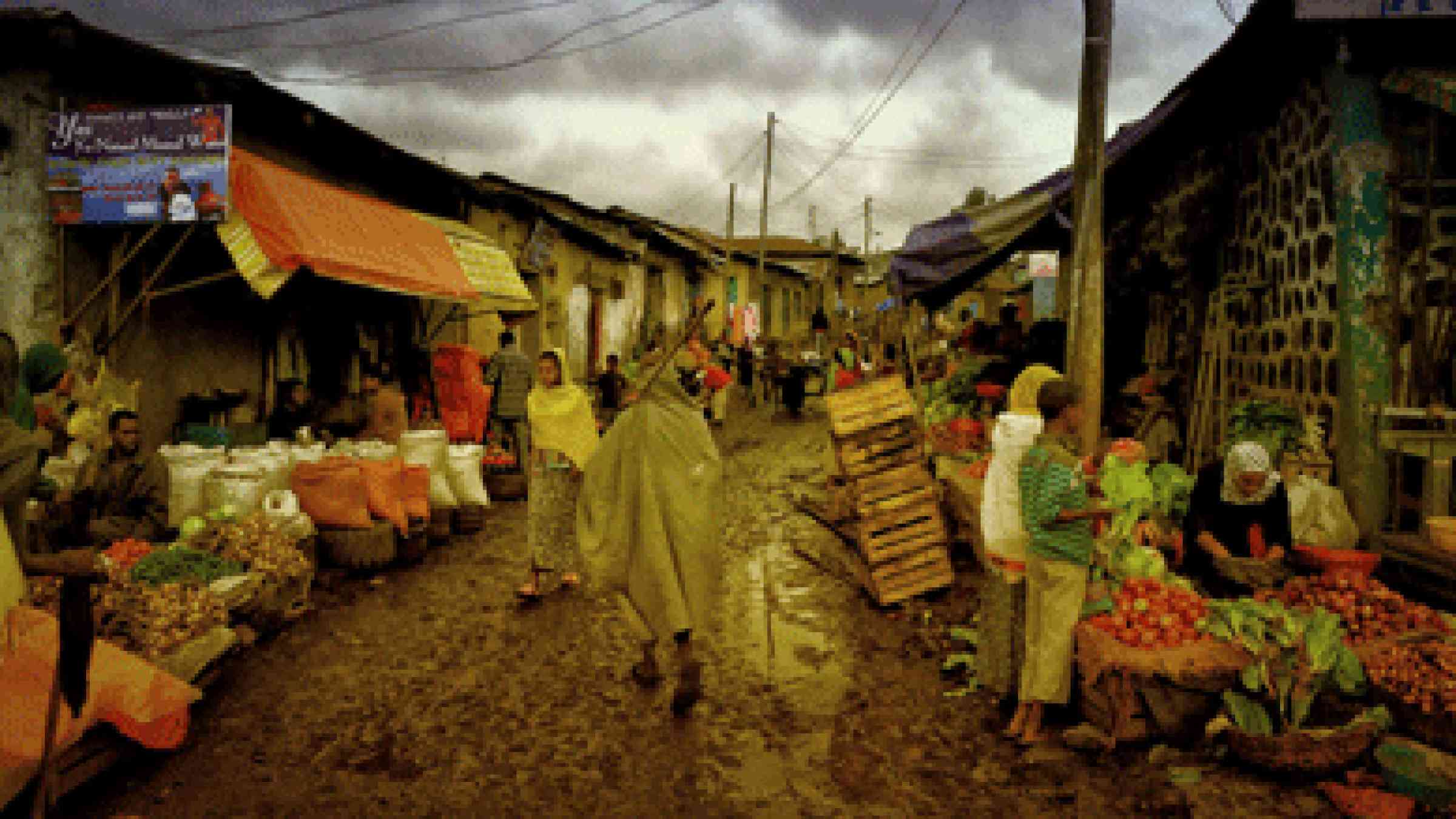In Ethiopia, crop insurance takes root but changes needed - experts

By Elias Gebreselassie
Ziway, Ethiopia - Gebre Sire, a farmer from the village of Abine Germama in Ethiopia's Oromia regional state, has been paying into weather-index based crop insurance for over two years. While he's happy that he has recently received his first payout after drought ruined his corn crop about a year ago, he feels there are ways to better maximize the scheme's benefits.
“I’ve already been paid 250 birr ($12.50) on the 100 birr ($5) premium I pay every season,” he said. But the value of the birr has been steadily dropping since the scheme began three years ago, and Sire says his payout doesn't quite cover all of his costs.
"The premium we pay is too small," he said. "I would like it to increase along with the payout."
For Ethiopian farmers dealing with the worsening impacts of climate change, small-scale crop insurance can be a lifesaver. But the insurance needs to expand – and undergo some tweaks – to effectively help them effectively recover from extreme weather, farmers and experts say.
Sire's complaint is a familiar one to Daniel Negassa, head of the micro-insurance department at Oromia Insurance Share Company (OIC), the only crop insurer in the state. However, he says, change is not yet on the cards.
“Micro-insurance by its nature is for the benefit of the low-income population," he said. "We’ve seen in our impact assessment that some farmers have difficulty even paying the current premium.”
In the next three or four years, OIC does plan to scale up insurance premiums and compensation in more affluent areas, Negassa said.
The more pressing issue, experts say, is getting the benefits of crop insurance to more farmers.
According to Melkachew Temesgen, a crop insurance officer at OIC, farming is a hugely untapped market for insurance companies. However, poor literacy levels among farmers, the complexity of weather-index-related insurance schemes and the need to convince intermediaries such as farmers cooperatives has discouraged other insurance companies from offering crop coverage.
Kosie Hashiguchi, an expert from the development organization Japan International Cooperation Agency (JICA), has been assisting the OIC with its insurance scheme for over two years. “When the idea was first proposed to insurance companies, many of them were unsure," he said. "Some even asked that JICA pay for the initial insurance premium payouts.”
Hoping to encourage the use of crop insurance throughout the country, JICA has been funding awareness creation programs and spreading the word to farmers through radio ads and leaflets. The agency is also working alongside the federal government and several regional governments to develop trainers who explain to insurance companies how crop insurance works.
While OIC insurance officer Temsgen agrees that the uptake of crop insurance is slower than he hoped, he is reassured by its success so far. Three farmers' cooperatives and 1,870 households in the Oromia region paid for crop insurance in 2013; by the end of 2014, that had risen to five cooperatives and 5,720 household.
The hope, he said, is to emulate that success across Oromia and wider areas of Ethiopia.
Data issues
Experts say one obstacle to the expansion of crop insurance schemes is the complexity and unreliability of the data. Using historical weather data, insurance companies evaluate an area's vulnerability to extreme weather and base compensation on those findings.
But according to Hashiguchi from JICA, because the satellites that track rainfall levels are not always reliable, there can be gaps in the data. “Weather-index crop insurance schemes need constant research and experimentation," before they can be considered reliable, he said.
He added that for countries such as Ethiopia, which has a majority rural population, strong reinsurance companies are needed to spread the risk before crop insurance can be sustainably expanded across the country.
Feyiso Biyo, head of Abine Germama village, would like to see the issues with crop insurance resolved so that the remaining third of the 919 households in his locality feel confident to join the scheme. The other households are already covered, he said.
Freeing farmers from the worry of crop failure could have far-reaching positive impacts, he said.
“We used to suffer from persistent drought, but this insurance scheme has assured people and motivated them to deal with climate change," he said. "They can now focus on other activities such as planting trees in deforested areas.”
Neighboring villages have taken notice and want to participate in the scheme, he said.
(Reporting by Elias Gebreselassie; editing by Jumana Farouky and Laurie Goering)